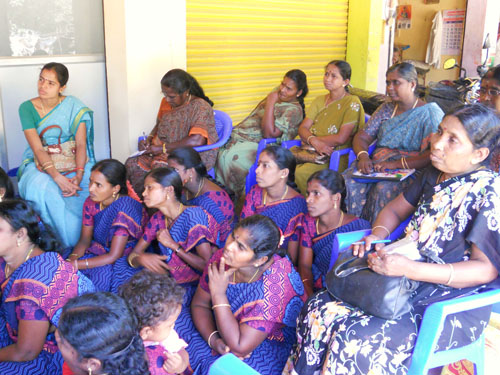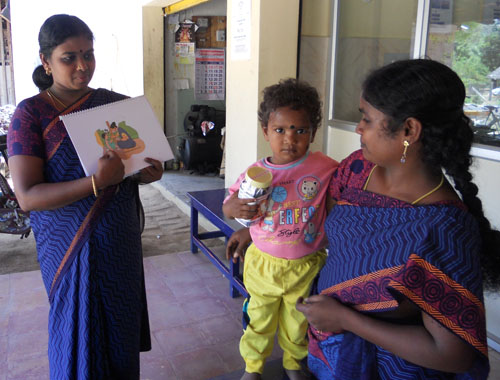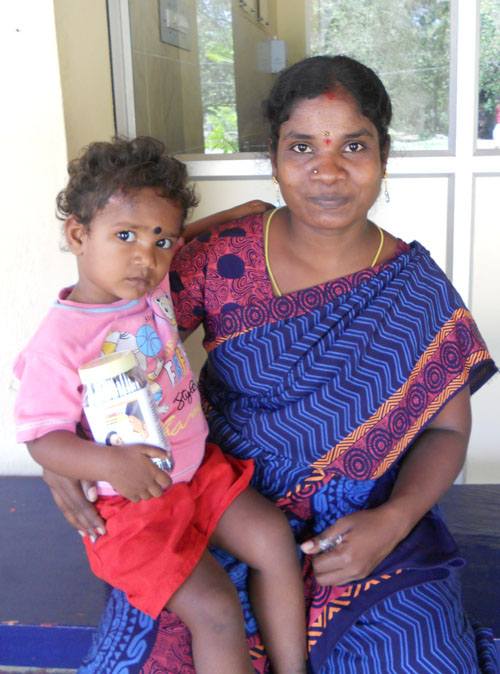By Lindsey Peugh, Research Associate – ICTPH
Monday marked the launch of the ICTPH and SughaVazhvu child nutrition intervention in Karambayam aiming to reduce anaemia among children aged 6-24 months. In attendance were local panchayat heads, Balwadi and Anganwadi teachers, as well as the SughaVazhvu Guides (SVG) who will be playing a central role in the implementation. The event consisted of informative talks from SughaVazhvu doctors and nurses as well as a role play by a SVG and a question and answer period. To inaugurate the event, a local panchayat head gave the first bottle of Sprinkles micronutrient powder to a SVG who has a 1 year old baby.


The nutrition program will provide mothers with education regarding child nutrition and anaemia at the household and encourage mothers to have their child’s nutritional status assessed. Further, for those children that are found to be anaemic, the mother will be encouraged to use Sprinkles at home. The advantage of this nutritional supplement is not only that it is very effective in preventing and treating anaemia but also that it is colourless, odourless, flavourless, and it can be used in the normal foods served at home. Over the months, ICTPH has created educational materials, packaging, and even data collection tools that resonate with local mothers so that the program can be most effective in reaching those most in need. In a population where the prevalence of anaemia is about 70% among children of this age group, such a program is essential to improving the health of individuals and communities. It is our vision that by improving the nutritional status of children, we can also contribute to improving their growth and development and further success in life. In addition to providing Sprinkles at the Karambayam clinic, the clinics in Alakkudi and Andipatti will also be offering the supplement to children.



Leave a Reply
5 Comments on "Launch of Sprinkles Nutrition Intervention"
The children and mothers are malnourished because of two main reasons. First the gap in the income and expenditure. Meaning that they have less income so money spent on food is less than required. Second is the eating/feeding behavior. The interventions should aim at these two critical points.
This may increase dependency on certain products and scalability is an issue
I think it could mostly be dealt with the eating and feeding behavior. From my experience with Karambayam most of them are well within earning limits. Its just the three steps need to be followed include:
1. Existing knowledge of mothers to be enhanced on the serious of the issue.
2. Knowledge built with the mothers on how to replicate easy recipes that has nutritive benefits.
3. Teach the child about the benefits of health and nutrition so that it becomes a inculcated behavior change.
You make very good points and as a long term strategy to fight malnutrition, programs should definitely take into account behavior and social change as a means to improve diet and the ability to access foods. Supplementation is a short term strategy to target the children in need before long term changes can be made. Our program will aim to do both so that anaemia can be reduced through Sprinkles in the short term but education and other strategies will be used to encourage diet changes not only for the 6-24 month olds but other age groups as well.
[…] National Health and Family Survey-3 (2005-2006). With this in mind, earlier this year, ICTPH had launched the infant nutrition intervention aimed at reducing the prevalence of anaemia in the age group of 6-24 […]